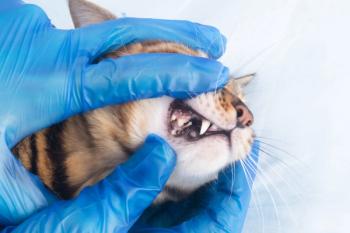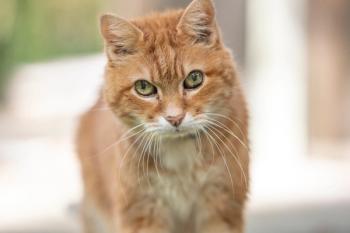
Osteoarthritis in cats: Prevalence and pathophysiology
Osteoarthritis may be categorized as primary or secondary.
PREVALENCE
In one of the first studies designed to determine the prevalence of DJD in cats, radiographs of 100 cats more than 12 years old (taken as part of a diagnostic work-up for multiple reasons) were retrospectively reviewed,2 and 90% of them showed radiographic evidence of DJD. When the medical records of these cats were examined, only four contained any mention of DJD, but severe DJD of the vertebral column (termed spondylosis deformans) was sometimes associated with neurologic disease. The key question from this study was "Did the failure to observe clinical signs truly represent a lack of clinical signs in the presence of radiographic findings or a failure to recognize signs?"
As in dogs,3 the radiographic findings of osteoarthritis do not always correlate well with clinical function. In a radiological study involving cats of all ages, 22% showed evidence of radiographic osteoarthritis, and when patient records were consulted, 33% of these cats also had clinical signs.4 Affected cats were significantly older than the control population. These authors also suggested that there may be little correlation between radiographic and clinical findings or that clinical signs of osteoarthritis in cats are not easily recognized.
In a recent study at a university referral hospital, the prevalence of radiographic signs of DJD was 33.9%, and the prevalence of clinical signs was 16.5%, with most affected cats being 10 years of age or older.1 These authors further classified their findings into DJD and osteoarthritis, the second being less common.
The elbow joint was the most commonly affected joint in some published studies.1,2,4,5 However, when osteoarthritis (rather than DJD) was specifically described, the hip joint was most frequently affected.1 Many cats have multiple affected joints, and bilateral involvement is common.
PATHOPHYSIOLOGY
Osteoarthritis may be categorized as primary or secondary. In primary osteoarthritis, no clear underlying cause is present. With secondary osteoarthritis, an underlying cause can be implied, such as hip dysplasia or previous trauma. In one study, half of the cats with osteoarthritis had an identifiable or historical cause, including radiographically identified hip dysplasia.1 In another study by the same researchers, 71% of cats had no obvious cause and were classified as having primary, or idiopathic, osteoarthritis.5
Editors' note: Dr. Robertson has received financial support from Boehringer-Ingelheim Vetmedica to conduct workshops for Boehringer-Ingelheim veterinarians, write one review article, and speak at veterinary continuing education meetings.
Newsletter
From exam room tips to practice management insights, get trusted veterinary news delivered straight to your inbox—subscribe to dvm360.






